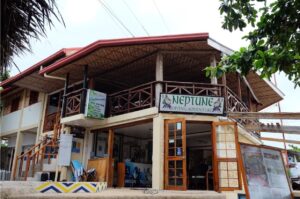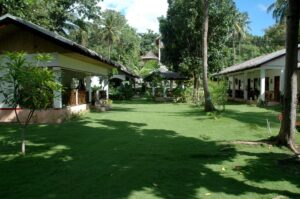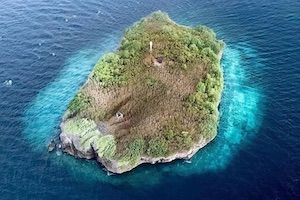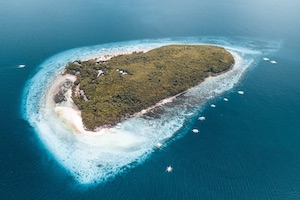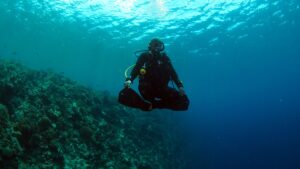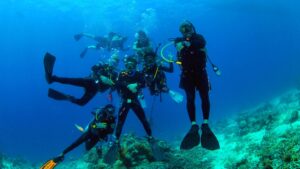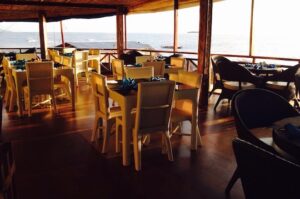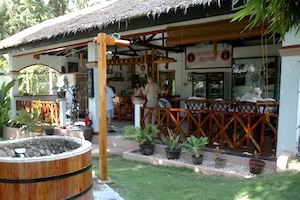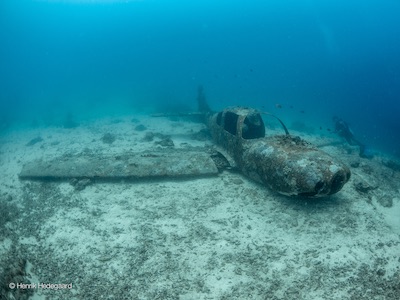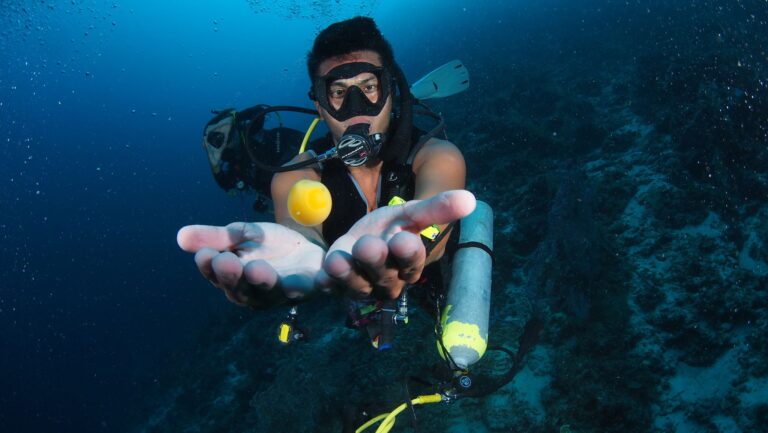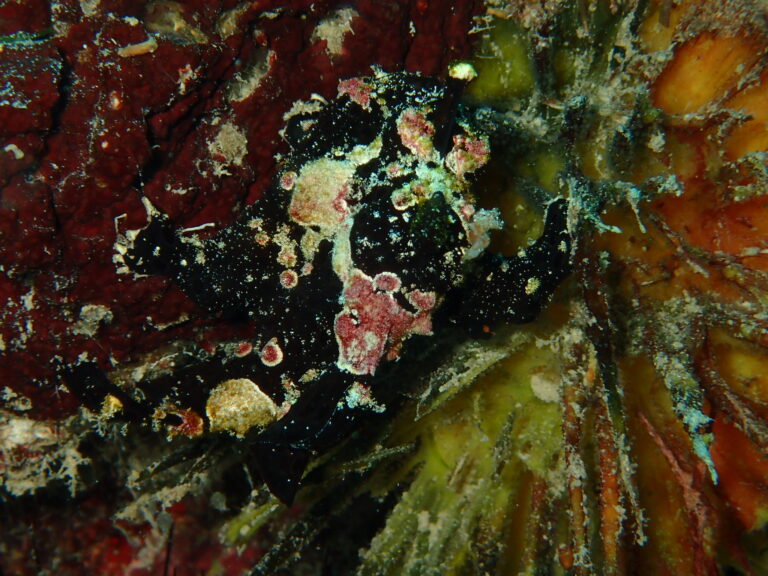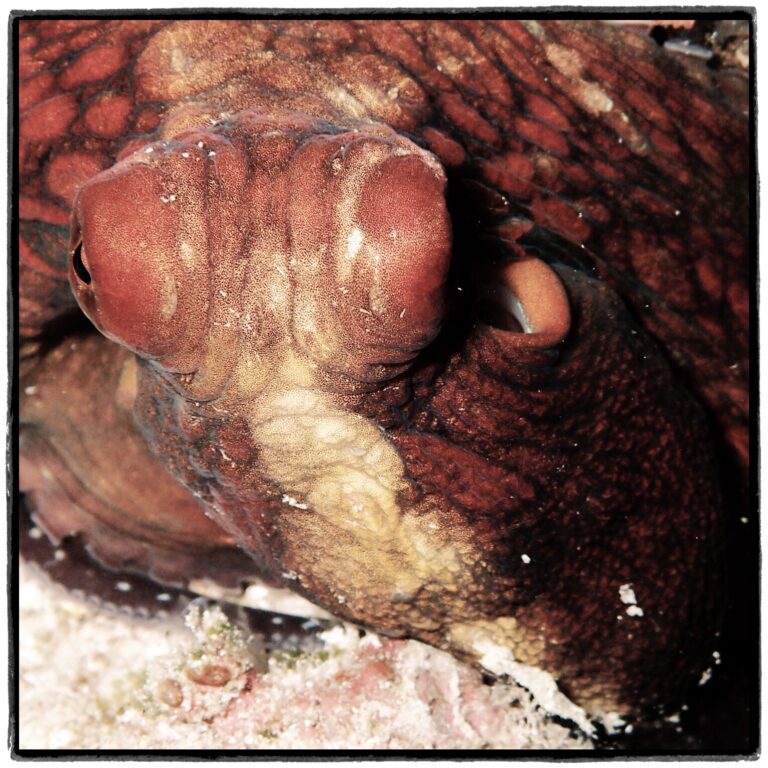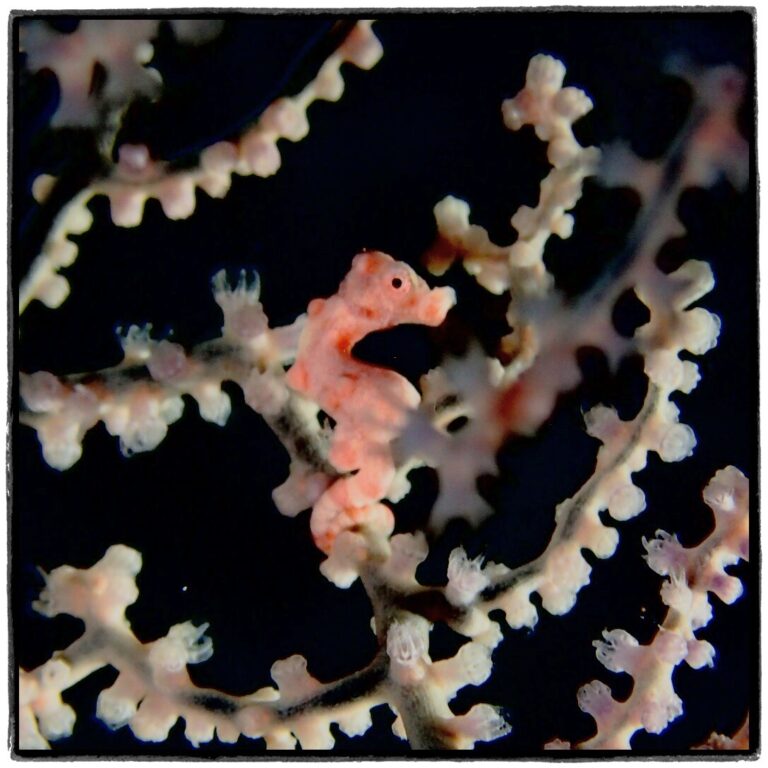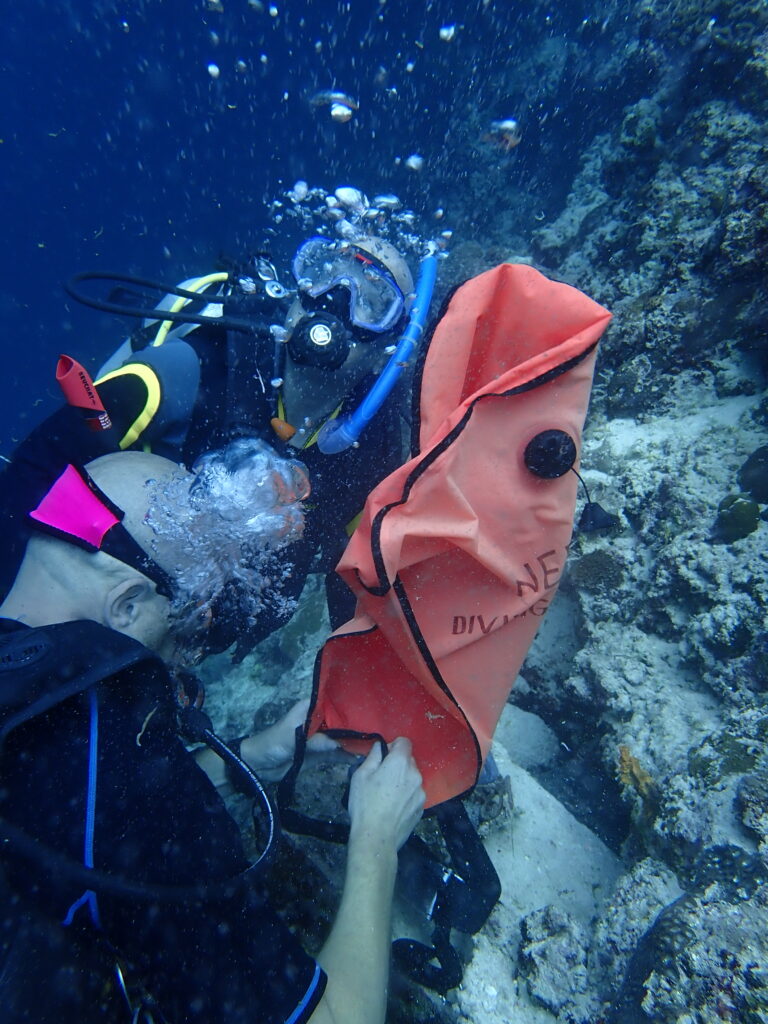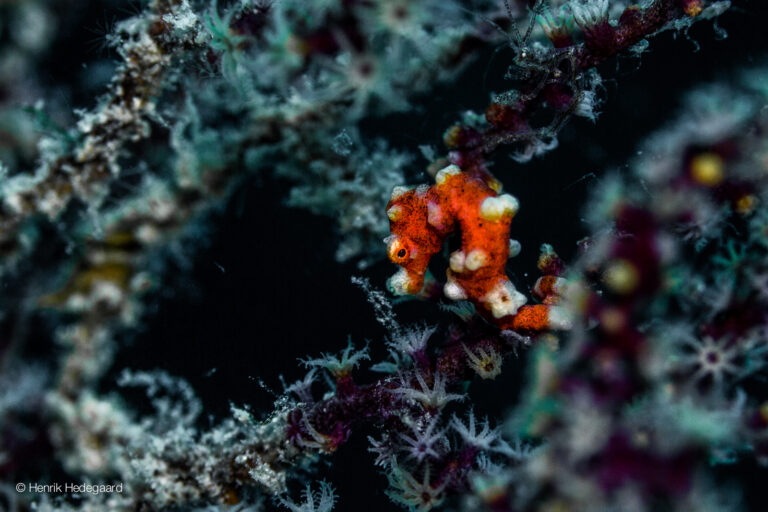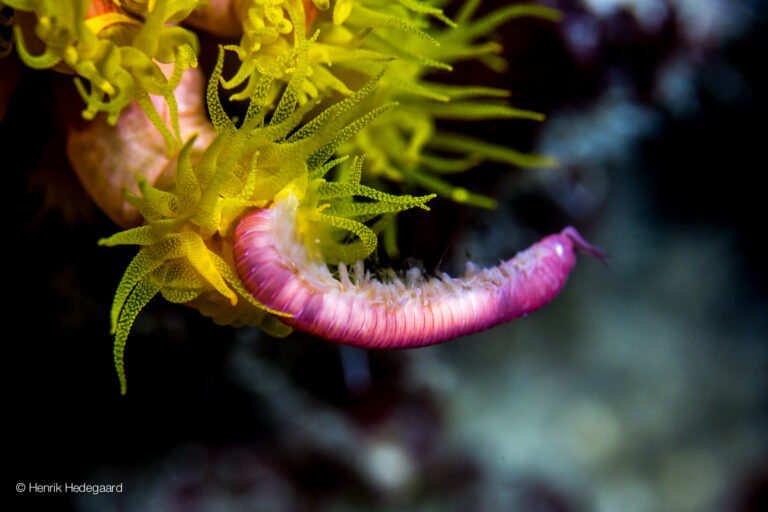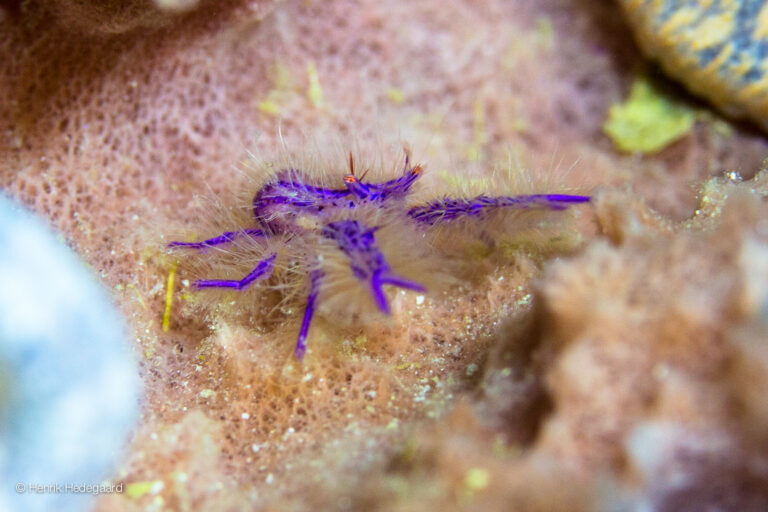Specialty courses are a great way to experience and learn about the areas of diving that interest you most. As with all our courses, we emphasize in-water skills and practice. During these courses knowledge is not formally tested but applied on actual dives. And there’s no better way to learn than under the supervision of an Instructor with the same interests. Most courses include 2-4 dives and will take 1-4 days.
Specialty Diver
The PADI Open Water or Advanced Open Water Certification can seem like the end goal but this is only the beginning. There is a full range of specialty courses which will take your diving skills to the next level. You will get more experience and explore a range of new skills, customized to your interests in the PADI Specialty courses. They will prepare you to dive specific places in the world. From drift diving, wreck diving and many more. Every PADI Specialty Diver course expands your skill set and your experience, opening doors to new diving opportunities. PADI offers a vast lineup of continuing-education courses that provide experience and training. Here in Neptune Diving Resort we offer a wide range of these specialties.
What’s the big deal about trash on the reefs?
Coral reefs are the oldest, most productive eco-system on earth. Effectively the rain forests of the sea, they’re home and food source to a million types of fish and marine creatures. Besides their environmental importance, coral reefs are extremely important to local economies, tourism, fishing industries, human health – and, of course, divers.
But coral reefs are in rapid decline, scientists estimating that approximately 25% have gone forever and, if current trends continue, will be completely gone in 30-50 years – find out more about this in our Eco Policy.
Have you ever been scuba diving and been disturbed by the amount of discarded plastic, fishing net and other debris? The PADI Project AWARE Dive Against Debris Specialty course provides you with the knowledge to make a difference, clean up a site and importantly, report your data to Project AWARE to collate.
Like all PADI dive courses, the Project AWARE Dive Against Debris course is comprised of 2 elements:
Knowledge Development – If you have friends or family who aren’t divers, they’re welcome to join the class too, so you can learn how to make a difference, together (see below for more about what you’ll learn).
Training dive – optional This is an actual Clean Up dive that you’ll plan, execute and log the results of, and it’s the perfect way to your learning and planning into practice right away. Check out Project AWARE Action Map to find the date that suits you best. Dates don’t work? Contact Aqua Hands for the next Dive Against Debris Event.
Here’s what you’ll cover in the Knowledge Development part of the course:
What marine debris is, where it comes from and the damage it does
A bunch “oh-yeah!” easy ways that you can prevent your trash becoming marine debris
How to plan and make a safe Dive Against Debris, without unintentionally doing more harm than good
What to decide what to remove and what to leave behind
How to log and report your Dive Against Debris data, so Project AWARE can use it to identify locations and marine life in greatest need of help, and what and where to focus their actions and solutions
If you care about protecting the ocean by learning how to do something about preventing trash endangering our underwater world, you’re going to love this course, and what you’ll take away from it. (Literally!) How can I start learning now? Find out more about marine debris and what you can start doing about it today, on the Project AWARE Dive Against Debris® Survey Toolkit.
Anyone who is a PADI (Junior) Open Water Divers and above or equivalent, aged 12 years and older are more then welcome to join.
Surface marker buoys (SMBs) allow scuba divers to mark boundaries for mapping or search and recovery, alert boat traffic, or provide a line as a visual reference for ascending divers. During two dives, learn the proper techniques and protocols for using surface marker buoys.
During two dives, you’ll learn how to:
- Determine when to deploy the SMB
- How to deploy the SMB
- Be prepared for deployment problems and what to do to avoid them
- Various types of SMB’s
Learn self reliance both while diving with a buddy and alone. This course is ideal for photographers and videographers and dive professionals. This course isn’t just about diving on your own; it’s about becoming more self-reliant whether in a buddy pair or dive team. This will overall make you a better prepared diver, whatever the situation. You will learn when diving alone may be applicable and how you compensate for the extra safety a buddy would give you.
Although most scuba dives are made with a buddy, an experienced diver may want or need to make dives without a partner. During the Self-Reliant Diver course, you learn about potential risks of diving alone and the value of equipment redundancy and necessary back-up gear.
There are two good reasons for you to take the self reliant diver course:
To develop your skills of planning and carrying out dives without a dive buddy, either when preferred or necessary
To sharpen your skills of self reliant diving, making you a stronger dive buddy or team member! The course will cover when diving alone might be applicable and the need to prepare and compensate for these situations.
Who can Join?
To enrol in the PADI Self Reliant Diver course, you must be 18 years or older and have at least the PADI Advanced Open Water Diver certification (or have a qualifying certification from another organisation). You must have a minimum of 100 logged dives. To qualify, divers must also complete a dive skills assessment.
If you don’t meet these minimum requirements then we can put together a package which will include them for you, contact us for more information.
Equipment you will use
You’ll need a dive computer along with the rest of your basic scuba equipment. A dive light and slate are also recommended. You will also need to have a
- Redundant gas source – pony cylinder *+, twin cylinders with isolation valve or sidemount configuration. Redundant gas must be configured so that the diver can access it with one hand.
- Redundant depth gauge and bottom timer, or dive computer.* +
- Redundant surface signaling devices (both visual and audible). +
The Deep Diver Specialty course offers you the opportunity of a lifetime – going deep to see things others can only dream about. In this course you will experience what it’s like to dive beyond 60 feet. Down there, it’s different. It takes additional training.
What will you learn?
- Specialized deep diving equipment.
- Deep dive planning, buddy contact procedures and buoyancy control.
- Managing your gas supply, dealing with gas narcosis and safety considerations.
Who should take this course?
If you’ve earned the PADI Adventure Diver rating or higher, and you’re at least 15 years old, you can enroll in the Deep Diver course.
What scuba gear will you use?
You drift down and pass through a window into the past. As you near the bottom, a recognizable shape begins to form. First, you see a straight line, then a round window. Next, a ship materializes in front of you. As you look at the wreck, past and the present meet.
Whether sunk intentionally or tragically, whether a sunken ship, a plane or an automobile, the call of wrecks is nearly irresistible to divers. Through the PADI Wreck Diver Specialty course, you get the skills, knowledge and procedures you need to answer the call of wreck diving. The fun part of the PADI Wreck Diver course is visiting wrecks, unlocking mysteries and starting to gain the knowledge and experience that allows you to see things that others overlook. Sometimes, only the trained, experienced eye recognizes that a small hole or open door likely caused the vessel’s demise.
What You Learn
- Techniques for diving exploring shipwrecks, and how to avoid common hazards
- How to research and learn the background of your favorite wrecks
- Wreck scuba diving equipment considerations
- Considerations and techniques for entering intact wrecks
- Experience in planning, organizing and making at least four wreck dives under the supervision of your PADI Instructor
- Wreck Diver Specialty Chart
Your Next Adventure
Many shipwrecks are often found in deeper water. That’s why the PADI Wreck Diver course is a natural companion to the PADI Deep Diver course.
Welcome to one of PADI’s most popular specialties – the PADI Enriched Air Diver course. Diving with enriched air nitrox lets you safely extend your no stop time beyond the no decompression limits for air. Diving with enriched air means more time underwater – but you need to be certified as an Enriched Air Diver to get enriched air fills. Whether you’re into underwater photography or wreck diving, on vacation in some tropical paradise or just out for a leisurely day of diving at your local dive site, the PADI Enriched Air Diver course helps you get more out of diving by giving you more time underwater.
Divers breathing underwater with Nitrox
You can typically stay down longer and get back in the water sooner. No wonder many divers choose this as their very first specialty.
What You Learn
- Techniques for getting more dive time by using enriched air nitrox
- Enriched air scuba diving equipment considerations
- Enriched air considerations, including managing oxygen exposure, how to tell what’s in your scuba tank and how to set your dive computer
Your Next Adventure
Diving with enriched air nitrox benefits all types of diving, but it goes especially well with these specialties:
- PADI Wreck Diver course – Popular wrecks tend to be deeper, so enriched air nitrox maximizes your exploration time.
- PADI Deep Diver course – The deeper you dive, the shorter your no stop time – but enriched air nitrox increases it, giving your more time at depth
- PADI Digital Underwater Photographer – Photographers usually like to make several dives so they can get lots of pictures. Enriched air nitrox reduces the amount of residual nitrogen you accumulate, allowing repetitive dives to be longer.
- PADI Master Scuba Diver The PADI Enriched Air Diver (Nitrox) course counts toward your Master Scuba Diver rating — the highest non professional rating in recreational diving.
The PADI Drift Diver Specialty course introduces you to the coolest magic carpet ride you’ll ever experience. This course shows you how to enjoy rivers and ocean currents by “going with the flow,” staying with your dive partner, communicating with the dive boat and knowing where you are the whole time. Drift Diving is nearly effortless and relaxing. You simply glide along and enjoy the rush of flying underwater while the current does the work.
What You Will Learn
During your PADI Drift Diver certification course, you learn about:
- Planning, organization, procedures, techniques, problems and hazards of drift diving
- An introduction to drift diving equipment — floats, lines, reels
- Buoyancy-control, navigation and communication for drift diving
- Site selection and overview of aquatic currents – causes and effects
- Techniques for staying close to a buddy or together as a group
Your Next Adventure
The Diver Propulsion Vehicle course introduces you to scuba diving with underwater scooters, which can come in handy while drift diving.
As the sun sets, you don your dive gear, slip on your mask and bite down on your regulator ready to see a whole new world that will be introduced to you by the PADI Night Diver Specialty course. A deep breath and you step off the boat – into the underwater night. Although you’ve seen this reef many times before, this time you drop into a whole new world and watch it come to life under the glow of your dive light.
What You Will Learn
The adventure, thrill and excitement of night diving can be yours when you complete your PADI Night Diver Specialty course. You learn about night dive planning, equipment and navigation. You practice these on three night dives, plus introduce yourself to the whole new cast of critters that comes out after the sun goes down. This includes:
- Entries, exits and navigation at night
- Nocturnal aquatic life
- Communication and light handling
Who should take this course?
This course is ideal for you if you:
- Are a PADI Open Water Diver or a Junior Open Water Diver (or qualifying certification from another organization) and 12 years old
- Has at least three dives
- Has the required dive lights and night diving equipment
This course has increased in popularity, not only among cave divers but also among those who interested in technical and recreational diving.
This increase in popularity is worldwide and is due to some extent to the development of a PADI Distinctive Speciality course.
The PADI Sidemount diver course teaches a unique way of buoyancy control resulting in a more streamlined profile that reduces drag making finning and moving through the water easier and more efficient.
You’ll attain a greater comfort level as side mount equipment and harness can be custom fit to each diving individual, accommodating divers of all shapes and sizes. Safety and assistance skills how to help any divers with any disabilities, as you carry the cylinder(s) separate from your harness to the water. Whilst within the water you would then attach your cylinders and weights, making the entries and exits to dive sites much easier.
You’ll learn safer options in terms of air management as you have an easier access to your cylinder valve(s), first stage(s) and alternate regulator should a problem arise. The course teaches you how to configure equipment learning that one harness and BCD does it all.
This statement is now true as the same sidemount equipment you use, can be used for more advanced types of diving i.e wreck, technical and cave diving.
Find a new and different way to configure your cylinders with the PADI Sidemount Diver course. Sidemount diving offers:
- an alternative way to streamline in the water
- easier equipment transportation when topside
- reduced lower back strain
- provides redundant gas supply
- ability to monitor all equipment because it’s in front of you
- increased gas supply for longer dives
Because you are able to move the cylinder from your back to your side, it instantly takes the pressure off of your back and gives you more flexibility to move and enjoy your dive. Plus, you don’t have to walk to the dive site with the cylinders on your back. You can enter the water and clip them on and go.
Prerequisites
- PADI Open Water Diver
- At least 15 years old
You can easily combine sidemount diving with any other PADI Specialty you have take. Contact Neptune Diving Resort for your PADI Sidemount course today!
Diver Propulsion Vehicles offer a thrilling way to see a lot of underwater territory in a brief amount of time. These things are a blast to ride! They scoot you through the water without kicking. Want to visit that offshore reef from the beach? A DPV may be the way to go.
Prerequisites
- Must be a PADI Open Water Diver or Junior Open Water Diver (or qualifying certification from another organization) and 12 years old
- Diver propulsion vehicle dive planning organization, procedures, techniques, problems and hazards
- Equipment considerations
- Diver etiquette and how to avoid harming fragile aquatic life
- The PADI Diver Propulsion Vehicle Diver certification counts toward your Master Scuba Diver rating.
The PADI Diver Propulsion Vehicle Diver certification counts toward your Master Scuba Diver rating.
Underwater photography is one of the most popular diving specialties, and the rise of digital underwater photography has made it easier and more fun than ever. This is why there are actually two PADI underwater photography courses. The PADI Digital Underwater Photographer course gets you going quickly with today modern digital equipment, whether you use a point-and-shoot snap camera or a sophisticated D-SLR like the pros. The PADI Underwater Photographer course is a more traditional photography course designed for conventional film equipment.
t’s a great way to relive the adventures you’ve had. Plus capture images to share with your friends and family.
You may be able to earn college credit for the PADI Underwater Photographer Specialty course.
What You’ll Learn
- How to choose the right underwater camera system for you
- The PADI SEA method for getting great shots quickly
- The three primary principles for good underwater photos
Your Next Adventure
Learn to scuba dive and take great underwater photos. Two excellent specialties to pair with underwater photography are the PADI Enriched Air Diver course, and the PADI Dry Suit Diver course on your way to PADI Master Scuba Diver. The PADI Enriched Air Diver course allows you to extend your time underwater so you have more time to capture images. You may also find the Peak Performance Buoyancy course gives you helpful tips to optimize your weighting and skills so you’ll be in better position to capture that perfect picture.
Wanna stay warm and toasty on a dive? Then dive dry. Yes! Unlike a wetsuit, a dry suit seals you off from the outside water and that keeps you warm! Even in surprisingly cold water. Dry suits let you dive more challenging dive sites, and extend your dive season. When you have the right cold water scuba diving attire, you can stand up to the elements and take advantage of the generally better visibility offered by winter months—especially at inland dive sites such as quarries, lakes, sinkholes and caves etc. As a dry suit diver, you’re equipped to scuba dive some of the world’s incredible dive sites in the world’s cooler regions that are best enjoyed in a dry suit even in their warmer months.
What You’ll Learn
Gain the knowledge and skills to safely don, dive with, doff and store a dry-suit. Get introduced to the different types of suits so you can make a very informed decision if considering purchasing a dry suit. You learn:
- Dry suit buoyancy control skills
- Dry suit maintenance, storage and basic repair
- Undergarment (fleece or overall-type garments worn under the dry suit) options
Have you ever dropped something in the water? Are you looking for lost “treasure”? The PADI Search and Recovery Diver Specialty course will teach you effective ways to find objects underwater and bring them to the surface. Small, large or just awkward, there is a way to bring them. Find lost items and lift them to the surface. It’s fun to use the lift bag. Not only are these skills fun, but very practical and ultimately useful because eventually, you’ll lose something in the water. As a Search and Recovery Diver, you’ll know how to search for and recover it.
What You’ll Learn
- Search and recovery dive planning, organization, procedures, techniques and how to deal with potential problems
- How to locate large and small objects using search patterns
- How to use a lift bag and other recovery methods
- Limited visibility search techniques
Your Next Adventure
Because you often need to navigate to specific spots to find lost items, the Underwater Navigator course can help you perfect your navigation skills.
What is neutral buoyancy? Scuba divers like to be neutrally buoyant so they neither sink nor float. It can be a tricky thing. Divers who’ve mastered the highest performance levels in buoyancy stand apart. You’ve seen them underwater. They glide effortlessly, use less air and ascend, descend or hover, almost as if by thought. They interact gently with aquatic life and affect their surroundings minimally. The PADI Peak Performance Buoyancy course refines the basic skills you learned as a PADI Open Water Diver and elevates them to the next level.
Part of mastering buoyancy control is learning how to use your BCD and weight system effectively, plus maintain streamlining. This makes the PADI Equipment Specialist course a natural companion, because you learn more about these pieces of gear and how to make them suit your specific diving styles.
Whether you’ve never made a boat dive or you’ve logged dozens, the PADI Boat Diver Specialty course can benefit almost every diver because different boats in different parts of the world do things differently. Diving from a boat is fun, especially when you look at ease when maneuvering around on it. It’s fun to know what you’re doing.
What You Learn
- Learn the tips, tricks and ways to
- Dive from boats ranging from small inflatables to giant live-aboards :
- how they differ from place to place
- gain experience and training from diving on boats in your local area
- Safely enter and exit the water :
- sometimes it’s better to hand your gear up to the crew and then climb in the boat
- sometimes you just take off your fins and weights and walk up the ladder
- Stow your gear in the most appropriate areas
- Use surface lines to initiate or conclude your dives.
- Locate basic boat safety equipment
Don’t miss a dive due to a scuba gear issue.
Whether it’s a blown o-ring, regulator problem, wet suit tear or a broken fin strap, you can learn how to manage basic scuba equipment adjustments.
As a PADI Equipment Specialist, you are prepared for the basic scuba equipment maintenance, care and adjustments you’ll encounter every day. In addition, you’ll learn interesting background information about how your gear works, how it’s repair and other information that helps you with your equipment investment.
The more you know about how your dive gear works, the more
- Comfortable you are with it
- Performance you get from it
- You can care for it
What You Learn
- Review the theory, principles and operation of scuba diving equipment
- Learn about routine, recommended care and maintenance procedures, and equipment storage
- How to overcome common problems with equipment and recommended professional maintenance procedures (may include a demonstration of repair procedures)
- Gain simple suggestions for comfortable equipment configurations and an introduction to new gear (may include optional confined water dive to try new or unfamiliar equipment)
- This Certification counts toward your Master Scuba Diver rating
The AWARE – Coral Reef Conservation Specialty course teaches divers, snorkelers and nondivers about the vital role of coral reefs in the marine environment. The course also familiarizes participants with the current state of the world’s coral reefs and how they can help. As a scuba diver, the health of aquatic ecosystems is often what makes a good dive. Become aware of the fragileness of coral reefs and how you can help preserve them.
There are no dives or age limits. Divers and nondivers alike enjoy learning about the aquatic environment.
- An introduction to the Project AWARE Foundation
- Covers the importance of coral reefs to marine ecosystems and coastal areas
- Coral reef biology, association and competition
- The status of the world’s coral reefs
- How participants can help, including responsible diving and snorkeling practices
- Certification counts toward the PADI Master Scuba Diver rating.
What You Learn
The AWARE – Coral Reef Conservation Specialty course teaches you about the vital role of coral reefs in the marine environment. The course also familiarizes you with the current state of the world’s coral reefs and how you can help. You will learn about the Project AWARE Foundation and:
- How coral reefs function
- Why they are so important
- Why many reefs are in serious trouble
- What you can do to prevent further decline
Have you ever been scuba diving and asked yourself, “What was that?”
The PADI Project AWARE Fish Identification Specialty course provides you with the fish identification basics so that next time, you know the answer.
You’ll find you enjoy your dives even more when you recognize the creatures that you see. The fun part about this course is you can use the skills you learn on every scuba diving vacation because once you learn the main fish families and characteristics it will help you decipher the species you see all over the world.
For example, a butterfly fish in the Caribbean has a similar shape to a butterfly fish in Southeast Asia, but their colors and markings maybe wildly different. If you know what fish family it belongs to, it becomes much easier to look up the local name or at least be able to intelligently ask the local scuba instructor what you saw. That works better than asking about a “yellow thingy with a funny tail fin.”
You need:
- Must be a PADI Open Water Diver or Junior Open Water Diver (or qualifying certification from another organization)
- Covers Project AWARE and aquatic protection worldwide
- Characteristics of local fish families and species will be explained
- Fish survey techniques and strategies
- Fish identification dive planning, organization and procedures will be practiced
- Including the two open water training dives, the course lasts about 12 hours
- Certification counts toward the PADI Master Scuba Diver rating.
Other than taking someone diving, there’s only one way to show someone the sounds, motion and dynamics of the underwater world. It’s underwater videography –motion imaging that allows you to share and document your underwater adventures. The PADI Underwater Videographer Specialty course shows you how to create videos that are interesting, entertaining and worth watching again and again.
The PADI Underwater Videographer Specialty course introduces you to underwater video equipment and videography fundamentals, such as exposure, focus, shot types, moves, story line and shot sequencing. It takes you through the post-dive editing process where you take your raw footage and create an underwater masterpiece. By the time you complete the course, you’ll have gone through the entire basic video production process.
- Must be a PADI Open Water Diver or Junior Open Water Diver certification (or qualifying certification from another organization)
- Number of Dives: Three
- Equipment overview, selection and maintenance
- Story planning and organization
- Shot sequencing
- Basic editing
- Certification counts toward the PADI Master Scuba Diver rating.
Look closer to see more on your next dive. Look for symbioses, predator/prey and other relationships between aquatic plant and animal life. Learn not just what fish and animals are, but how they interact with each other and the environment.
Learn about why some creatures behave the way they do and what their role is in the aquatic ecosystem.
What You Learn
- The major aquatic life groupings, interactions and factual information that dispels negative myths.
- The role of aquatic plants, food chains and predator prey relationships
- Responsible interactions with aquatic life
- The underwater naturalist’s view of organisms and their roles in the environment
- You put this information into practice during your two open water dives.
Be the diver everyone wants to follow and make your sense of direction legendary with the PADI Underwater Navigator Specialty course.
What You Learn
Underwater navigation can be challenging, but in the PADI Underwater Navigator Specialty course, you master the challenge. You learn the tools of the trade, including navigation via natural clues and by compass.
You learn:
- Navigation patterns
- Natural navigation (without a compass)
- Compass navigation
- How to “mark” or relocate a submerged object or position from the surface
- Underwater map making
- How to follow irregular courses with the Nav-Finder
- Dive site relocation
- How to estimate distance underwater

